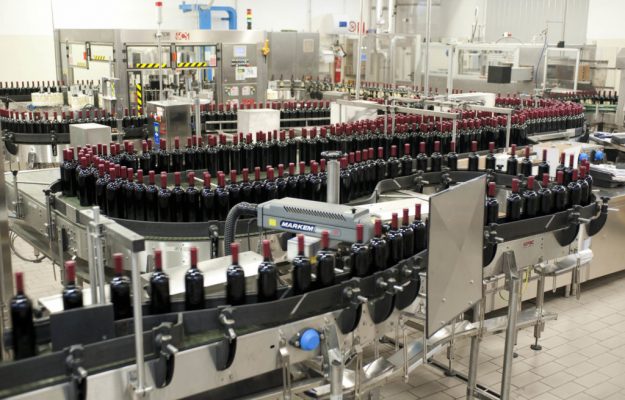Italy is in the midst of grape harvesting. The bulk of the ripe great red varieties is still in the vineyards, while most of the grapes used for sparkling and white wines are beginning to arrive in the wineries. It is still early to make any predictions (UIV, ISMEA and Assoenologi forecasts speak of 46 million hectoliters), and while carefully watching the sky, there are however already some certainties at least number wise, which tell us that, as of September 15, 2019, and therefore in the middle of grape harvesting, Italy had 38 million hectoliters of “stock” wine in its cellars. That number is almost 6 million hectoliters more compared to the 32.6 million hectoliters in stock on September 30, 2018. These data come from the analysis of the Ministry of Agriculture’s latest report on “Cantina Italia”, based on data from the online register, published a few days ago. In some areas in Italy, and for certain types of wine, especially table wines, this overflow caters to the already heavy tension on prices at the origin that over the past year have been on a galloping downward trend, which is likely to continue over the next few months.
The report points out that 59% of Italian wine is held in the northern regions while the Veneto Region alone holds a quarter of all national wine. The provinces of Verona and Treviso have 19% of all Italian wine, compared instead to Apulia and Sicily that together hold 16% of the national wine.
Over 51% of the wine in stock is a Denomination, and the majority is red (about 59%). PGI wines count 25.2% and again red prevails (more than 59%), while varietal wines in stock are just 1.7% of the total. The remaining 22% is made up of table wines.
On the other hand, wines from organic farming represent 6% of cellar stocks in Italy at this time.
The report also highlighted another fact, which must make us stop and think. There are 524 PDOs and PGIs in Italy, which definitely testify to the great wealth of history and culture of Italian wine, but as far as production goes (and market, ed.). Only ten denominations account for 40% of the total PDO and PGI wines in the Italian wine cellars while the first twenty make up more than 50%. Going into detail, Prosecco DOC, alone, at 1.9 million hectoliters, represents 6.8% of all PDO and PGI wines in Italy today (this percentage rises to over 8.5% if we also add 547.000 hectoliters of Conegliano Valdobbiadene Prosecco Superiore DOCG). Further, the highest amount of wines in stock are the TGI Veneto and the TGI Toscana (both counting 1.1 million hectoliters) and then, the following wines, all counting more that 1 million hectoliters: TGI Terre Siciliane, the PDOs of Montepulciano d’Abruzzo, Chianti and Sicily, while rounding out this “Top 10” are PGI Puglia, DOC Delle Venezie and TGI Salento, which hold just under one million hectoliters of wine in the cellars.
Cellar stocks among the top 20 denominations include Chianti Classico, TGI Province of Verona, the aforementioned Prosecco DOCG, Franciacorta, Valpolicella Ripasso, Barolo, Amarone della Valpolicella, TGI Rubicone and Emilia and Primitivo di Manduria.
Copyright © 2000/2025
Contatti: info@winenews.it
Seguici anche su Twitter: @WineNewsIt
Seguici anche su Facebook: @winenewsit
Questo articolo è tratto dall'archivio di WineNews - Tutti i diritti riservati - Copyright © 2000/2025









































































































































































































